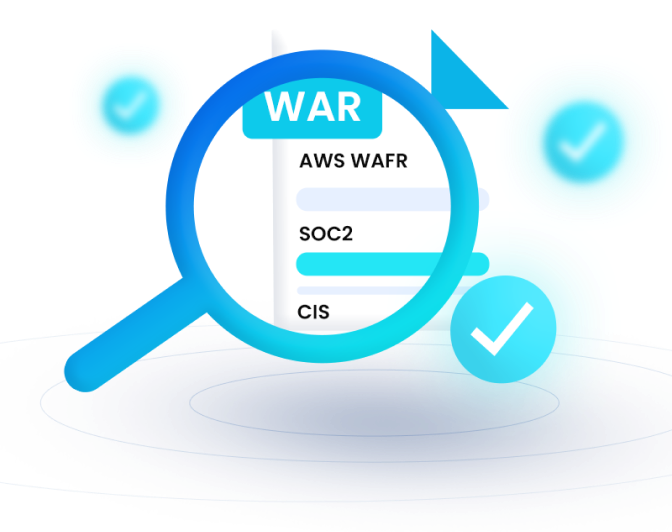- Blog
- AWS Compliance
- AWS Compliance Automation: The Four Reasons for Automating Compliance
AWS Compliance Automation: The Four Reasons for Automating Compliance
Last Updated: February 1, 2024, AWS Compliance
AWS compliance automation is a service that automates compliance procedures for you instead of going the manual route. Compliance is an essential component for small and medium businesses as it builds trust. They say, no trust, no sale. In essence, being compliant makes you eligible for more opportunities for growth and scale. For example, AWS can make its users get major cybersecurity certifications.
More examples of AWS Compliance programs include:
- Getting SOC 1, SOC 2, or SOC 3 compliant
- Being compliant with protocols from FISMA and FedRAMP
- Getting ISO 27018 and ISO 9001 certified
AWS compliance automation ensures you meet most of these protocols and regulations without doing tiresome paperwork.
Let’s explain:
On-Premises Compliance vs. Cloud Compliance Automation
In the traditional on-premises environment, teams must conduct an assessment, get audit reports, and set goals for each department to be compliant. They’d set timelines and work under pressure just to meet a certain protocol. Site visits were also frequent to check whether an organization was being compliant.
While some of these steps are still necessary, AWS cloud compliance automation lets you inherit protocols as a shared responsibility. If an organization is AWS compliant, its users also become compliant as they share the same infrastructure.
Four Reasons for AWS Compliance Automation
1. Save with the Shared Responsibility Framework.
Already, the AWS shared responsibility framework makes you compliant faster. There’s no need to manage physical computers to be compliant as all resources will be in the cloud. By being a cloud adopter of AWS, you save time associated with the management of physical servers. Let’s look at a security protocol, such as NIST, which needs adherence to Identity Access Management (IAM). For on-premises, you’ll need a unique internal management system to manage user roles and access rights in each computer. But the cloud eliminates the need for coding. By joining the cloud, you accept the shared responsibility framework, which automates compliance.
2. Inherit the AWS Security Controls.
Security controls are design principles and best practices established to help you create more valuable, effective, and secure applications. AWS already uses this security protocol, which makes it easy for users to implement, too. AWS offers automatic reporting based on thousands of security protocols. The recommendations range from security to performance. Automatic reporting tools, such as AWS Artifact, help you save time and still be compliant.
3. Automating Compliance Easily Fixes Problems.
Part of AWS culture is frequent audits and reviews of cloud facilities. There can also be automated audits and reviews. For example, an automated security audit may identify flaws in a user’s application. Since AWS did its job identifying the problem, it will send a simple notification service to the user explaining details of the error. Users have to react manually and even follow recommended procedures to fix the problem. The good news is the cloud will automatically fix problems like this one in the future. Automation is a two-way benefit. First, it fixes common problems automatically. Second, automation caters to our forgetful nature. With too much business to handle, it’s easy to forget auditing our systems. Most compliance certifications need periodic renewal.
4. Automating Compliance Reduces Risk.
Computers are generally less prone to errors than human beings. This means automated computer tools have fewer errors than manned computer processes. Companies have to conduct risky operations, such as installing third-party software, to make them compliant when there is no automated compliance. Sometimes, they have to hinder operations or work under some limits just to be compliant. The risk, however, lies in failed processes and operations. Failed manual compliance processes lead to crashed apps, data loss, and even exposure of confidential information. AWS, being more secure than offline servers, reduces lots of risks associated with manual compliance.
The Bottom Line
We can help you start with AWS compliance automation. Reach out to at https://nops.io/.






